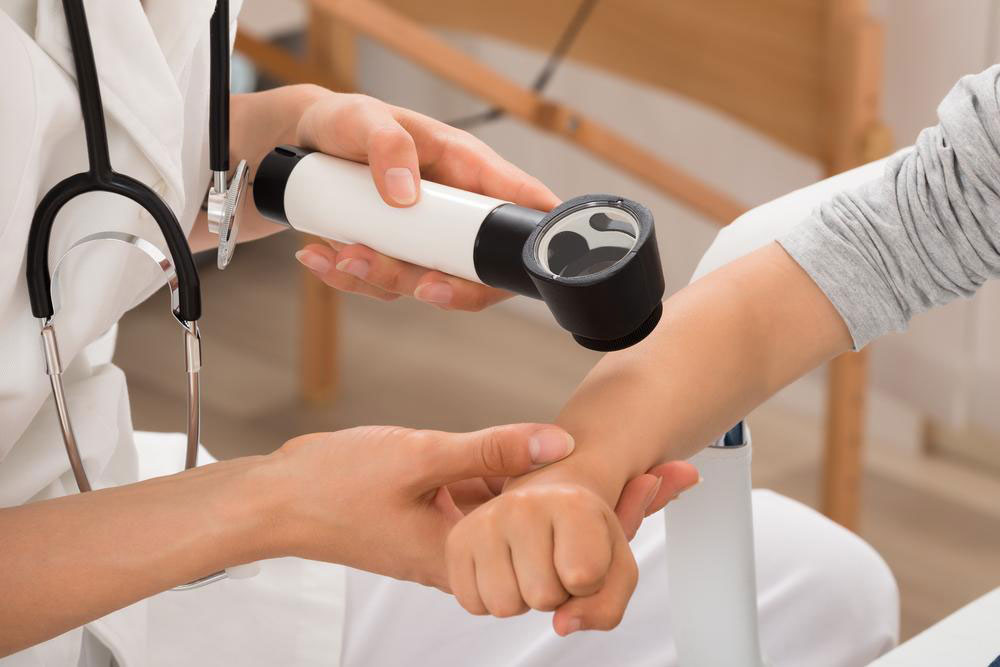Complete Guide to Detecting and Managing Atopic Dermatitis Effectively
This comprehensive guide covers the essentials of atopic dermatitis, including symptoms recognition, triggers, home remedies, and professional treatments. Early diagnosis and proper management are key to controlling flare-ups and maintaining healthy skin. Learn how to identify symptoms through images, understand common triggers, and adopt effective strategies to alleviate discomfort and prevent complications. Whether you're dealing with mild or severe cases, this detailed resource provides practical insights for better skin health and quality of life.

Complete Guide to Detecting and Managing Atopic Dermatitis Effectively
Skin health is a vital aspect of overall well-being, yet many individuals face frequent skin problems that range from mild irritation to chronic conditions. Among these, atopic dermatitis—commonly referred to as eczema—is one of the most widespread and persistent skin disorders affecting millions worldwide. This condition not only causes discomfort but also impacts quality of life due to its recurring flare-ups and visible skin changes. Early recognition, accurate diagnosis, and appropriate management are essential for controlling symptoms and preventing long-term complications.
Understanding Atopic Dermatitis: What You Need to Know
Atopic dermatitis is a chronic, relapsing inflammatory skin disease characterized by dry, itchy, and inflamed skin.
While it can affect individuals of all ages, it is most common in children, although many adults also experience persistent symptoms.
This condition often occurs alongside other allergic disorders such as asthma, hay fever, and food allergies, indicating a linked immune response.
The exact cause remains elusive, but genetics, immune system dysfunction, environmental factors, and skin barrier defects play significant roles.
While the precise triggers are still under investigation, certain internal and external factors can aggravate the condition, leading to increased severity and frequency of flare-ups.
Common triggers that worsen atopic dermatitis include:
Exposure to harsh soaps, detergents, and cleaning products that strip the skin of natural oils and cause irritation.
Wearing rough, woolen, or synthetic fabrics that can cause itching and discomfort.
Environmental pollutants such as pollen, pet dander, mold spores, and dust mites that provoke allergic reactions.
Sudden changes in weather conditions, especially exposure to cold, dry air, which dehydrates the skin.
Stress and emotional factors that can influence immune responses and trigger outbreaks.
To better understand the manifestation of atopic dermatitis, many individuals turn to online visual resources. Recognizing symptoms through images can facilitate early intervention, especially if symptoms are ambiguous or mild.
Tips for identifying atopic dermatitis through online images include:
Look for persistent redness, dryness, and scaling on the skin's surface.
Notice the presence of blisters, oozing, or crusted areas indicating active inflammation.
Observe thickened or leathery skin resulting from scratching and chronic rubbing.
Identify swollen, raw patches that may become infected if scratched excessively.
Different stages of the disease can show varying appearances, from initial redness to severe cracked and broken skin.
Effective home management strategies can significantly alleviate symptoms and reduce flare-ups. Incorporating natural remedies and lifestyle adjustments forms the foundation of a holistic approach to skin health.
Home remedies for atopic dermatitis include:
Consistent moisturizing with nourishing oils like coconut, almond, or olive oil to restore skin barrier function.
Warm baths with soothing additives such as baking soda, colloidal oatmeal, or apple cider vinegar to reduce inflammation and itchiness.
Applying cold compresses to areas of intense itching or swelling for quick relief.
Using gentle, fragrance-free cleansers and skin-care products designed for sensitive skin.
Maintaining optimal indoor humidity levels with humidifiers to prevent skin from drying out in winter or dry environments.
When natural remedies are insufficient, medical treatments play a pivotal role in managing atopic dermatitis effectively. Consulting a healthcare professional ensures tailored therapy suited to the severity and specifics of each case.
Professional treatment options encompass:
Over-the-counter hydrocortisone creams and emollients for mild cases.
Prescription topical corticosteroids and calcineurin inhibitors to suppress inflammation during flare-ups.
Phototherapy—using controlled ultraviolet light exposure—for severe or resistant cases.
Oral antihistamines to control itching and allergic responses.
Systemic medications in extreme cases involving extensive skin involvement or secondary infections.
Persistent or localized eczema, such as hand eczema, often requires specialized attention. Accurate assessment by dermatologists ensures optimal outcomes and prevents long-term skin damage.
Special considerations for hand eczema:
Review images of hand eczema to determine severity and affected areas.
Dermatologists can diagnose and differentiate between eczema and other skin conditions such as psoriasis or contact dermatitis.
Topical treatments, protective measures, and avoiding known triggers are primary management strategies.
Persistent inflammation or cracking on the palms may signal an evolving hand eczema that needs targeted intervention.
Ultimately, managing atopic dermatitis requires a combination of lifestyle adjustments, home remedies, and medical care. Recognizing early symptoms, understanding triggers, and adhering to treatment plans can significantly improve life quality for affected individuals. Regular dermatology consultations and a proactive approach ensure long-term control and healthier skin.





